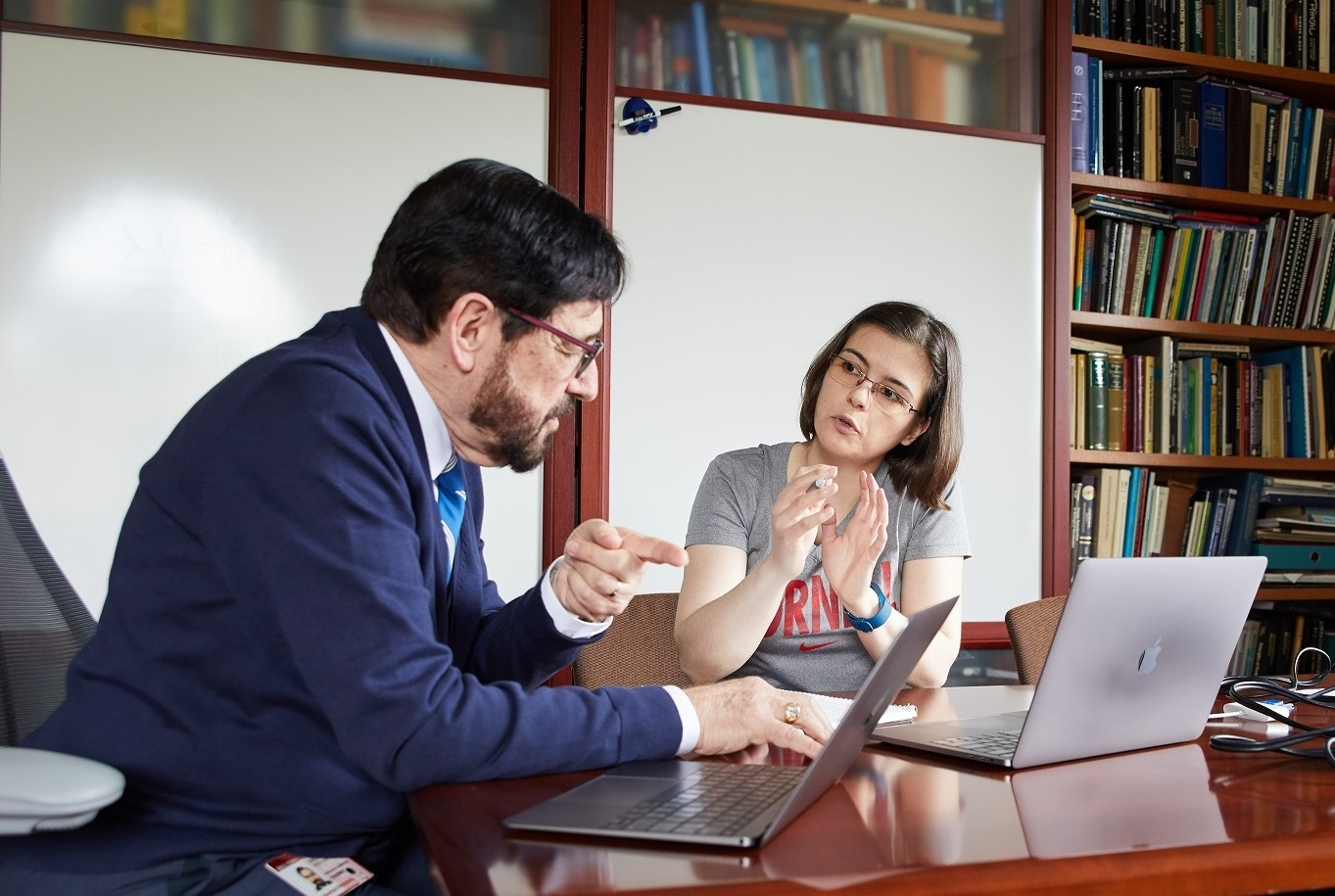Milka Doktorova realized early into her PhD research that she might need to work in two different labs, hundreds of miles apart. It was the only way she could validate simulations and examine in atomic detail the way our cell membranes function – information that could ultimately lead to developing effective medications. Until now, most studies on how medications affect membrane barriers and the proteins that live in them have been performed with artificial symmetric membranes, even though membranes in the body are asymmetric. Doktorova would need two different types of labs and advanced technologies to create and examine the asymmetric membranes needed to make her research more impactful for understanding what happens in our bodies—and the Cornell University Graduate Linkage program made it possible.
Created in 2006, the program, which is administered by Weill Cornell Medicine’s Graduate School of Medical Sciences and Cornell University Graduate School, allows graduate students from either campus to perform research at the other, promoting faculty and graduate student exchanges between Ithaca and Manhattan. To date, 50 students from both campuses have participated in the program.
Doktorova, who expects to graduate in 2018 from the Tri-Institutional PhD Program in Computational Biology and Medicine at Weill Cornell Medicine, spent two years in Dr. Gerald Feigenson’s membrane biophysics laboratory at Cornell University in Ithaca. She’s now working in Dr. Harel Weinstein’s computational biophysics lab in New York City. Between the two labs, she is developing a protocol for understanding the structural properties and dynamics of asymmetric membranes, creating and studying them in Ithaca and performing computerized simulations in New York City. Through her research, she hopes to promote a better understanding of the effects of membrane asymmetry on the processes in the body, potentially leading to the development of new drugs that ultimately help patients.
“For decades, it was difficult to make asymmetric membranes, and so very little experimental data existed, and simulation studies couldn't be validated,” said Doktorova, who grew up in Bulgaria and chose Weill Cornell Medicine for its intercampus collaborations. “Any new hypotheses formulated from the studies couldn’t be tested.”
Cornell University’s state-of-the-art equipment makes it possible for Doktorova to perform unique experiments on asymmetric membranes. At Cornell’s National Biomedical Center for Advanced ESR technologies, she used Electron Spin Resonance to measure the order of lipid molecules that make up the membrane. At Dr. Feigenson’s laboratory, she used microscopy imaging and collected experimental data on how asymmetry affects membrane structure. In New York City, she is building asymmetric membrane models on the computer to simulate their motions, and developing new mathematical models to analyze and compare the computational results to the experimental data she collected in Ithaca. These tools give her insight to the dynamic molecular interactions in cells’ membranes at an atomic detail that cannot be achieved in any other way.
“Milka has an ability to bring people together to plow new territory—and the one she chose is really important,” said Dr. Weinstein, the Maxwell M. Upson Professor of Physiology and Biophysics, chairman of the Department of Physiology and Biophysics and director of the HRH Prince Alwaleed Bin Talal Bin Abdulaziz Alsaud Institute for Computational Biomedicine at Weill Cornell Medicine.
“This is fundamental research in membrane biophysics, addressing a major gap in our ability to study and quantify the properties and mechanisms of one of the most important components of living cells--their membrane.”
Doktorova credits the principal investigators at both labs for being supportive of her research. “I talk about the wet lab experiments with Dr. Feigenson and the simulations and computational analysis with Dr. Weinstein,” she said, adding that it is unusual for someone with her background to work in an experimental biophysics lab, because scientists in different disciplines have historically avoided such open collaborations. “It requires faith to take a computational biologist and let them experiment in their lab. I’ve been lucky.”
“For Milka, she gets to be mentored by these two giants,” said Dr. Randi Silver, professor of physiology and biophysics and associate dean and Linkage program director of the Weill Cornell Graduate School of Medical Sciences. “She gets the best of both minds.” Dr. Silver added that the field of biomedical science is undergoing rapid transformation, with a new focus on interdisciplinary collaborations across many scientific and technical disciplines, including biology, chemistry, physics, nano-biotechnology, clinical medicine, applied mathematics, and computer science. The Linkage program helps to bring students into this new era of collaborative research.
Several papers based on Doktorova’s works have already appeared in scientific journals and another article, which includes the work of researchers from both labs, is currently being reviewed for publication.
“Bridging and combining disciplines through meaningful research is not a simple task,” Dr. Weinstein said. “Milka’s case is one of the best examples I know of where all these opportunities were actually used, with excellent outcome.” He added that the Linkage program is unique, because it offers students an education that prepares students for “the real future of science, which requires scientists from different fields and disciplines to think and work together.”

